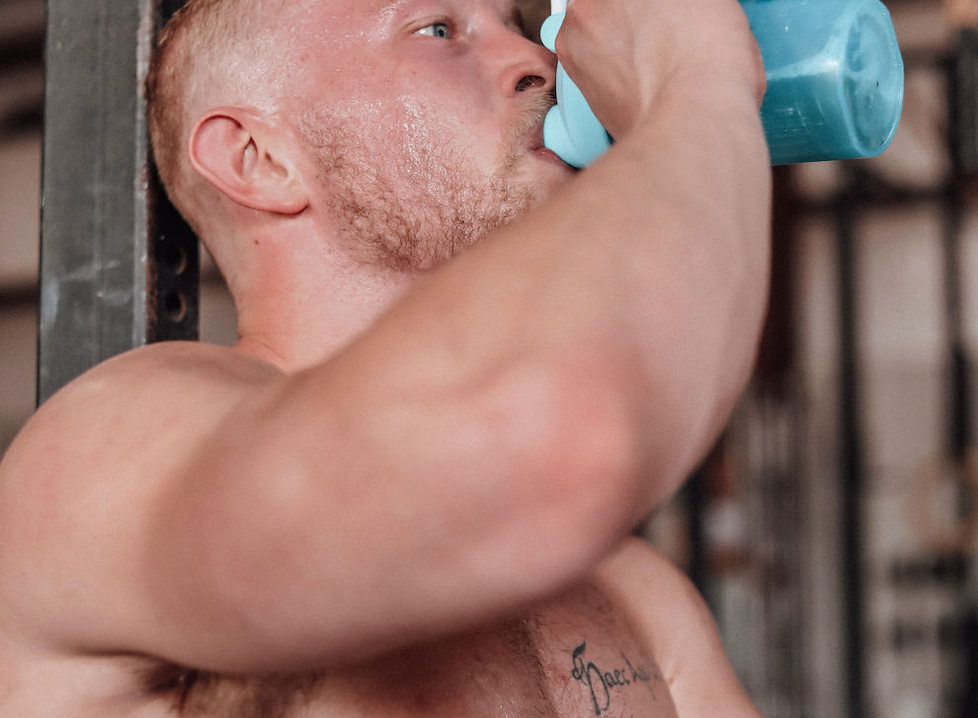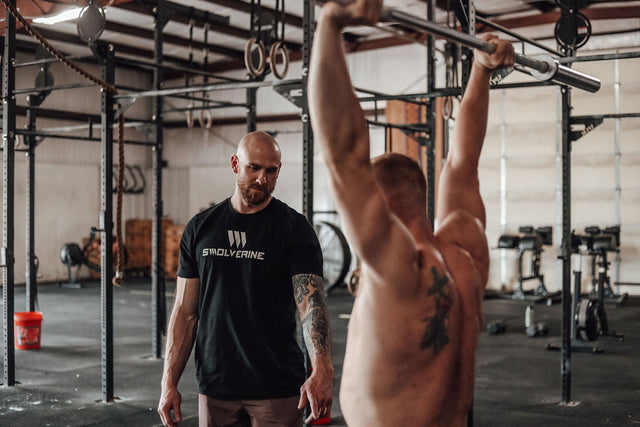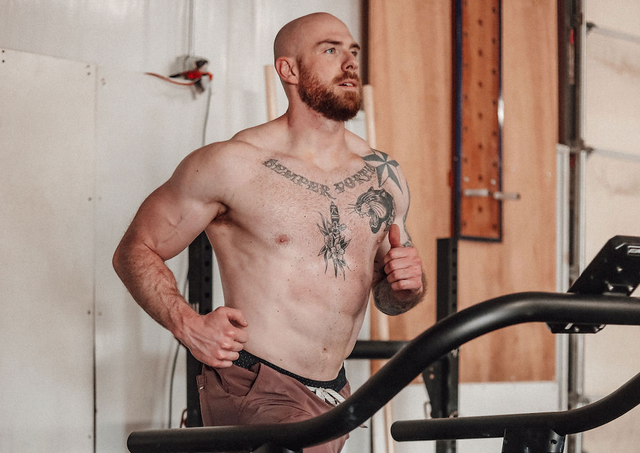For many enhanced athletes, the goal is clear: build mass, cut fat, and step on stage with an elite-level physique. But what happens when the pursuit of size compromises your shape? Enter roid gut — one of the most notorious and misunderstood side effects of performance-enhancing drug (PED) use.
Roid gut, also known as GH gut or Palumboism, refers to the permanent distension of the abdominal region caused by a mix of growth hormone abuse, insulin mismanagement, core hypertrophy, and digestive dysfunction. It’s a look that’s cost many athletes their symmetry — and even their careers.
“The aesthetic cost of abdominal distension is high. It distracts from muscularity and conditioning and significantly lowers scoring potential in competitive bodybuilding.”
— Cadegiani et al., Frontiers in Endocrinology
The worst part? Roid gut doesn’t always go away, even with dieting or fasting. Once abdominal organs enlarge and the core musculature grows outward, it’s often a permanent shift.
But here’s the good news: it’s preventable.
This guide will walk you through exactly how to avoid roid gut while on cycle, with best practices rooted in science, experience, and long-term aesthetic thinking — so you can grow smart and stay stage-ready.
What Is Roid Gut?
Roid gut — often called “GH gut,” “bodybuilder belly,” or medically, organomegaly with abdominal distension — refers to the protruding, distended abdomen seen in some enhanced bodybuilders, even when they are lean and shredded. It’s not simple bloating or fat gain — it’s a combination of internal organ growth, abdominal wall thickening, and digestive system overload.
Key visual markers of roid gut:
-
Stomach sticks out even when fasted or flexed
-
Visible abs over a protruding, firm abdomen
-
Loss of the classic V-taper and tight waist aesthetic
-
Barrel-like or bloated appearance on stage
What causes it? Roid gut stems from multiple, compounding factors:
“Chronic supraphysiological doses of growth hormone and insulin lead to increases in visceral organ size, abdominal wall thickening, and outward displacement of the abdominal cavity.”
— Melmed, New England Journal of Medicine
Unlike temporary bloating, roid gut is often:
-
Long-term or permanent
-
Resistant to diet, cardio, and gut detoxing
-
A direct result of enhancement misuse and abdominal training neglect
This condition became widely known during the late 90s and early 2000s as athletes pushed PEDs to new extremes. Now, it remains one of the clearest signals of uncontrolled enhancement — and a red flag for any athlete who values aesthetics.
Understanding how it develops is the first step in preventing it — especially for athletes stacking growth hormone, insulin, or anabolic steroids.
Key Causes of Roid Gut on Cycle
Roid gut is rarely caused by a single factor. Instead, it’s the result of multiple overlapping stressors — from drug protocols to poor digestive habits — that together lead to structural and visual changes in the abdomen.
Here are the most common culprits behind roid gut during a bodybuilding cycle:
1. Growth Hormone (GH) and Organ Enlargement
Growth hormone stimulates growth of muscle, connective tissue, and internal organs. While that’s great for muscle recovery and fat loss, it can also cause organomegaly — the enlargement of organs like the liver, intestines, and kidneys — when used at high doses or for long durations.
"GH stimulates tissue growth systemically, including cardiac, hepatic, and intestinal hypertrophy, which can expand intra-abdominal volume and visibly protrude the abdomen."
— Isaksson et al., Endocrine Reviews
2. Insulin Misuse and Nutrient Spillover
Insulin helps shuttle nutrients into cells post-meal, but excessive insulin use — especially when combined with GH — can lead to:
-
Constant overfeeding
-
Water retention
-
Visceral fat gain
This promotes bloating, GI slowdown, and expanded intestinal girth, even in relatively lean athletes.
"Insulin misuse in athletes is associated with visceral adiposity, gut distension, and loss of glycemic control — especially during concurrent GH use."
— Cadegiani et al., Hormones
3. Abdominal Wall Hypertrophy
Heavy lifting — particularly belted compound movements like squats and deadlifts — causes the rectus abdominis and obliques to grow thicker.
Without balancing this with vacuum training or core control drills, this creates a blocky, outward-thrusting abdomen.
4. Digestive Stress and Constant Food Intake
Bodybuilders often eat huge amounts of food to support mass. Combined with PED-induced gut motility issues, this results in:
-
Slower digestion
-
Constant bloating
-
Gut inflammation and dysbiosis
-
A "stuffed" midsection that never fully decompresses
5. Improper Bracing and Intra-Abdominal Pressure
Overusing lifting belts, bracing incorrectly, and mismanaging core pressure during heavy lifts can gradually cause the abdominal wall to protrude.
Without learning to manage intra-abdominal pressure, athletes literally train their stomachs to push out.
"Increased intra-abdominal pressure, if not managed properly, can cause diastasis recti and outward core adaptation in strength athletes."
— American Journal of Physical Medicine & Rehabilitation
Each of these factors contributes to roid gut in different ways. The more they stack up, the harder it becomes to reverse — which is why proactive prevention during a cycle is critical.
Best Practices to Prevent Roid Gut During a Cycle
Avoiding roid gut isn’t about avoiding muscle growth — it’s about growing intelligently, managing internal pressure, and supporting your digestive system.
Here are the most effective and science-backed strategies to stay lean-waisted while on cycle:
1. Use GH and Insulin with Precision — or Not at All
High doses of GH (over 4–6 IU/day) and insulin, especially when combined, significantly increase the risk of abdominal distension.
If you're going to use them:
-
Stick to lower doses and limit duration
-
Time insulin around training, not every meal
-
Monitor waist circumference weekly
-
Never combine without a specific strategy
"Concurrent use of GH and insulin requires careful monitoring of abdominal girth and glycemic control to prevent visceral expansion."
— Hoffman et al., Journal of Strength and Conditioning Research
2. Train Your Core for Control, Not Hypertrophy
Too many athletes make their waist bigger with weighted crunches, side bends, and oblique overtraining. Instead, focus on:
-
Vacuum training (Transverse Abdominis Control)
-
Planks, deadbugs, and core activation without overload
-
Controlled eccentric core work
-
Bracing drills that teach internal pressure regulation
A study in Physical Therapy in Sport showed that vacuum training significantly improved waist circumference and abdominal wall tension in trained athletes over 8 weeks.
3. Manage Food Volume Intelligently
Even during bulking or enhanced cycles, how much — and how often — you eat affects your waistline.
Strategies to reduce GI stress:
-
Eat calorie-dense, low-volume meals (nut butters, rice, oils)
-
Avoid constant fullness — let the gut “rest” between meals
-
Use digestive enzymes or Greens + Reds to support motility
-
Minimize artificial sweeteners, carbonated drinks, and excessive fiber
4. Rethink Your Lifting Belt and Bracing
If you’re wearing a belt for every set — you’re overdoing it. Improper or overused bracing leads to:
-
Habitual outward abdominal pressure
-
Weakened deep core activation
-
Long-term visual distension
✅ Train your abs to pull in, not push out — especially under load.
5. Reduce Systemic Inflammation and Gut Stress
PEDs, high food intake, and hard training all elevate inflammation, which can increase bloating and GI permeability.
Combat it with:
-
Omega-3s like Krill Oil
-
Daily L-Glutamine for gut wall repair
-
Hydration + electrolyte support with INTRA
-
High-antioxidant, anti-inflammatory foods
"Gut inflammation is a key driver of distension in athletes consuming hypercaloric diets or engaging in chronic PED use."
— Camilleri, Gastroenterology
Swolverine Supplement Stack to Support Midsection Control And Roid Gut
Enhancing your physique should never come at the cost of a blown-out waist. While PEDs and bulking phases can put stress on your digestive system and abdominal aesthetics, the right supplements can help protect your gut, regulate inflammation, and maintain tight core control throughout your cycle.
Here’s how Swolverine’s targeted stack supports midsection health and aesthetics:
1. Greens+Reds
Supports digestive enzyme activity, gut motility, and microbiome balance. Reduces inflammation from high-volume eating and promotes nutrient absorption and GI regularity.
“Greens and antioxidant-rich blends improve gut health, reduce bloating, and support liver detoxification — key for physique athletes during enhancement phases.”
— Rossi, Nutrients
2. INTRA
Advanced electrolyte and hydration formula that maintains fluid balance and intra-abdominal pressure regulation. Provides taurine and glutamine for GI and cellular support. Proper hydration and electrolyte status can reduce transient bloating and abdominal water retention, particularly under high PED loads.
3. L-Glutamine
Helps heal intestinal permeability and supports mucosal integrity. Aids in GI recovery under inflammatory stress from training, PEDs, or poor digestion. Reduces gas, bloating, and gut fatigue.
“Glutamine supplementation has demonstrated significant efficacy in reducing intestinal permeability and promoting gut healing.”
— Rao & Samak, Current Opinion in Clinical Nutrition and Metabolic Care
4. Collagen Protein
Provides glycine and proline to rebuild the gut lining. Supports connective tissue, intestinal repair, and joint resilience. Blends easily with Greens+Reds for a morning gut stack. Particularly effective for physique athletes experiencing intestinal wear from PEDs or excessive food intake.
5. Krill Oil
Delivers omega-3 fatty acids that reduce systemic and gut inflammation, enhance insulin sensitivity, and modulate GH-related side effects. Supports cardiovascular health and liver detox pathways. Lowering inflammation is critical for minimizing bloating and preventing organ stress that contributes to roid gut.
“Omega-3 fatty acids have been shown to reduce systemic and intestinal inflammation, improve gut barrier integrity, and positively modulate metabolic pathways.”
— Calder, Frontiers in Immunology
Using Swolverine’s stack consistently can help keep your core tight and functional, even during aggressive growth phases or enhanced cycles. Stack strategically — grow smart.
Final Tips and Long-Term Aesthetic Strategy
Roid gut doesn’t appear overnight. It develops slowly — cycle after cycle, inch by inch — from overlooked details and short-term thinking. If you’re serious about longevity and stage presence, your waist should be protected like every other muscle group.
Here’s how to build size while keeping your aesthetics razor-sharp:
1. Track Your Waist Like a Muscle
-
Measure waist circumference weekly (fasted).
-
Include front and side profile photos in your progress tracking.
-
Use these metrics like you would with arms, legs, or chest development.
2. Prioritize the V-Taper in Your Training
-
Build lats and delts to enhance upper frame width.
-
Keep core volume low — focus on control, not hypertrophy.
-
Limit oblique overload to preserve a narrow waist illusion.
3. Cycle Off Strategically
-
Don’t run high doses of GH, insulin, or bulking agents year-round. Plan aesthetic phases:
-
8–12 week growth cycles followed by waist-reducing mini-cuts
-
Core-specific deloads with vacuum training
-
Gut reset weeks with Greens+Reds and L-Glutamine
-
4. Use Your Supplement Stack Religiously
Build a morning and intra-workout routine with:
Daily use → digestive control → better waist management.
“Waist aesthetics are the most underappreciated component of competitive physique judging. A wide waist offsets years of upper body work — but it’s avoidable with smart planning.”
— IFBB Coach Chad Nicholls
Mastering your midsection is about restraint, not restriction. Respect the line between optimal enhancement and visual sacrifice — and you’ll preserve both performance and proportions.
FAQ: How to Prevent Roid Gut on Cycle
1. What is roid gut?
Roid gut refers to the distended, protruding abdomen seen in some enhanced bodybuilders, even when they are lean. It is caused by a combination of growth hormone use, insulin misuse, core hypertrophy, organ enlargement, and digestive stress — not just bloating or overeating.
2. Is roid gut permanent?
In many cases, yes. Once organomegaly (enlargement of internal organs) and abdominal wall thickening occur, the changes can be structural and irreversible. That’s why early prevention during cycles is critical.
3. How can I prevent roid gut while using growth hormone or insulin?
-
Keep GH doses moderate (≤4 IU/day) and limit duration
-
Only use insulin when absolutely necessary, and time it precisely
-
Avoid overeating and poor food choices that worsen gut motility
-
Use digestive and inflammation-supporting supplements like Greens+Reds, L-Glutamine, and Krill Oil
“Concurrent use of GH and insulin requires careful monitoring of abdominal girth and glycemic control to prevent visceral expansion.”
— Hoffman et al., Journal of Strength and Conditioning Research
4. Should I stop training abs to avoid roid gut?
No — but you should stop training them for hypertrophy. Instead, focus on:
-
Vacuum training (transverse abdominis activation)
-
Static holds (planks, deadbugs)
-
Pressure control exercises for bracing
-
Avoid heavy oblique and weighted ab work
“Vacuum training significantly improved waist circumference and abdominal wall tension in trained athletes over 8 weeks.”
— Physical Therapy in Sport
5. What supplements help reduce or prevent roid gut?
Swolverine’s stack supports digestion, inflammation, and gut repair:
-
Greens+Reds for microbiome and GI motility
-
INTRA for hydration and pressure management
-
L-Glutamine for gut lining health
-
Krill Oil for anti-inflammatory support
-
Collagen Protein for tissue repair and intestinal recovery
6. Does wearing a lifting belt contribute to roid gut?
Overusing a lifting belt can promote constant outward bracing, which may contribute to abdominal distension. Use a belt only on heavy compound lifts, and make sure you are also training intra-abdominal pressure control without it.
“Increased intra-abdominal pressure, if not managed properly, can cause diastasis recti and outward core adaptation in strength athletes.”
— American Journal of Physical Medicine & Rehabilitation







